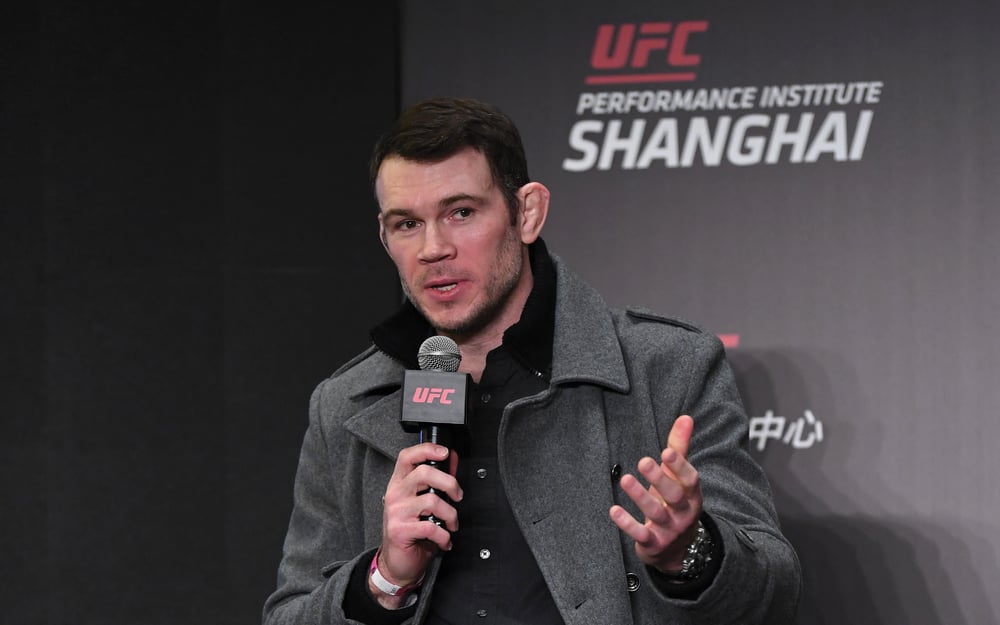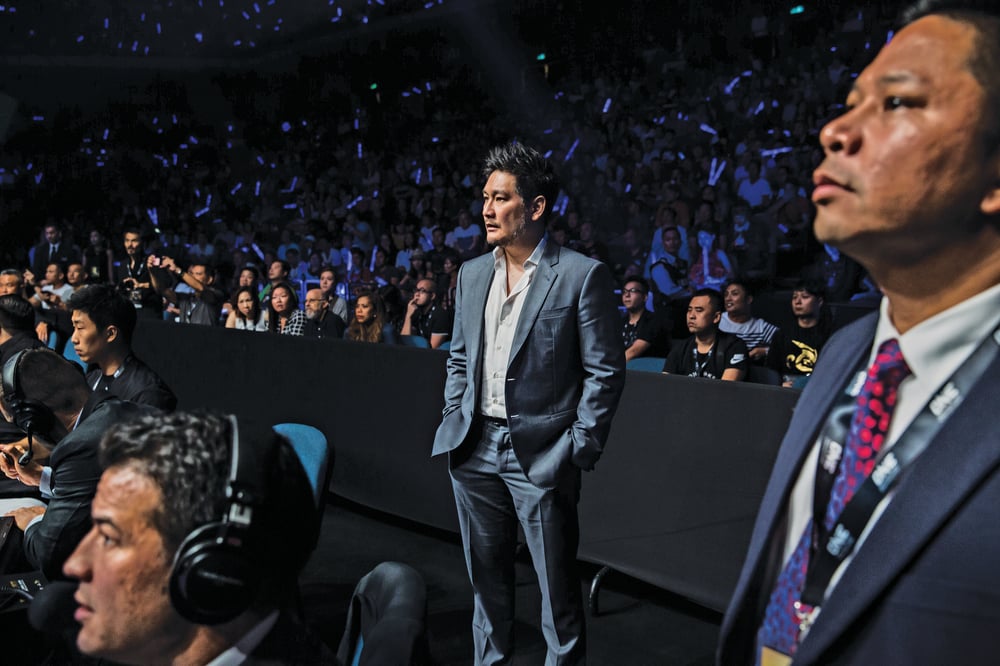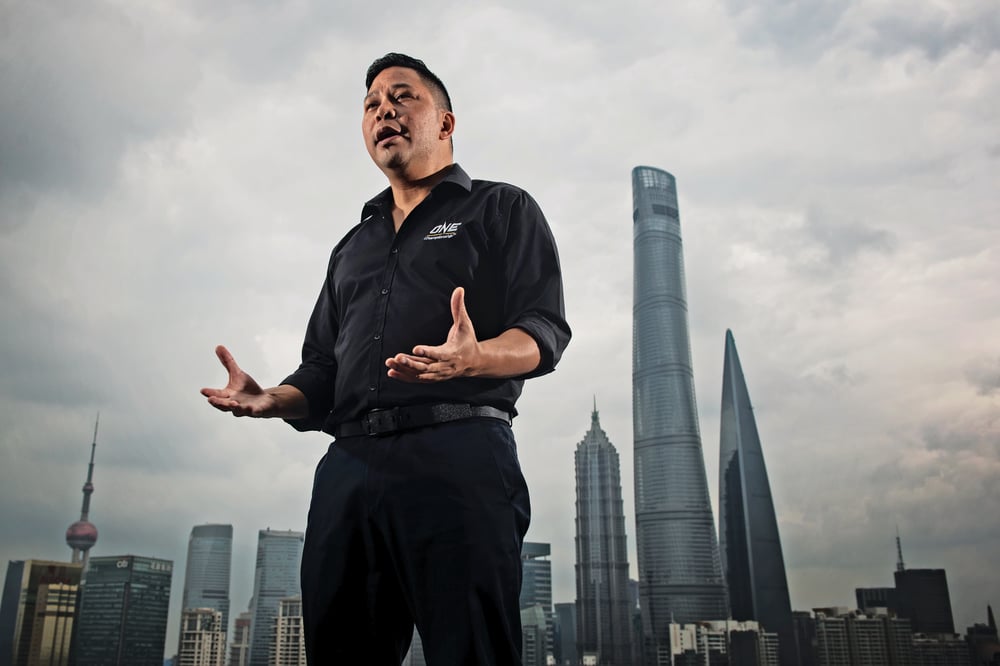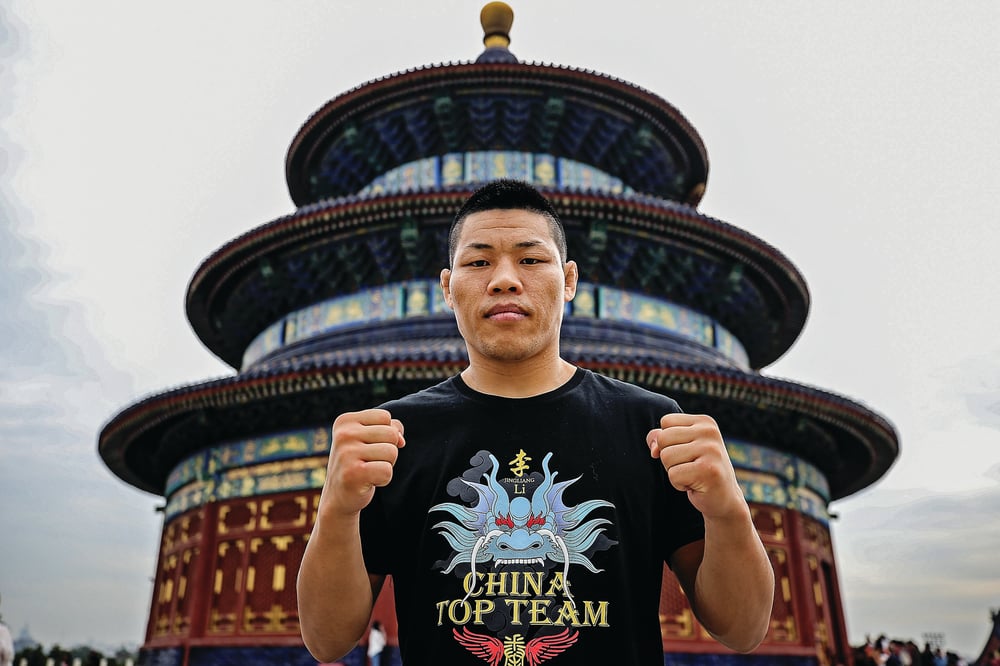
Issue 177
April 2019
The battle for mixed martial arts dominance in Asia is about to become an arms race between two fight leagues as ONE Championship and the UFC look for supremacy in a potentially huge market.
For years there has been a slow burn in Asia, where traditional martial arts began, but there is now an accelerating arms race to secure the strongest possible foothold in the mixed martial arts industry, notably in China, which is unfolding month by month. The sport is truly in its infancy there but there is a regular, very sizeable audience, currently estimated at 40 million for major events.
The potential for growth in the region is enormous, and as MMA events saturate the western hemisphere and North America in particular, the global gain from increasing fight events into another time zone has a magnetic appeal for the UFC, sold to IMG-WME (and now owned by William Morris Endeavour) for $4 billion, thirty months ago.

The UFC has made a few previous forays into Asia, with a smattering of events in Beijing and Shanghai, and a continued growth into Singapore. But the UFC – and its biggest rival in the area, ONE Championship – are set to go head-to-head in the next five years and within a decade it is a market that could prove to be the biggest ever mined by MMA fight leagues. Some have cited the sport in Asia to be at a developmental stage comparable to when the Gracie family first fought its way into the United States, but it may have to be a nuanced growth not seen before either in north America, Brazil or Europe.
There are complexities. The burning issue right now is what strategy to adopt, both in how to physically grow the brands, and what ‘attitude’ to adopt in the sell and consumption of the product to television, to fans, to the mainstream, and indeed to government. Remember when it was like that in Europe, and even the USA? A process of education and humanization of the fighters?
The plans being set by both ONE and the UFC have been vastly different to date, though both organizations will have to depend on the success of local heroes, local stars, to create early inroads. The philosophies of presentation though, are vastly different, with ONE opting to sign and develop fighters who carry a respect for the mores of traditional martial arts.
The UFC have made their intent clear recently, setting about building the biggest MMA training facility in the world, in Shanghai, while ONE Championship are both espousing traditional Asian attitudes to its promotion, as well as bolting on Gamers as a part of its reach. It all makes for a fascinating power struggle.
Is China, for example, ready for a Conor McGregor versus Khabib Nurmagomedov-style rivalry, a tipping of the scales with a nod towards partisanship and counter-culture? Rebels who become heroes? The signs are there that they are not, certainly not in China, Thailand or Singapore, where a degree of skepticism still remains for the sport from the traditionalists and, in part, from government. Conservatism still reigns, which makes this a fascinating subject.
While there is clearly money to be made with a huge market due to population alone, generally speaking, MMA still holds a negative reputation in mainland China. For differing reasons. Last year, for example, a Chinese MMA fighter named Xu Xiaodong attempted to promote his theory that traditional Chinese martial arts were ineffective in ‘real’ fights, challenging any traditional martial artist who could defeat him. What transpired was an aged Tai Chi master being beaten up by Xu before even throwing a punch. The video went viral, and rocked China. So much so, that Xu received threats, with a bounty of 100 million RMB (almost $15 million) for any Chinese martial artist who could defeat him. The government intervened, blocking his Weibo account and there were even police raids on further fights.
Again, it goes back to how the region can transition from traditional martial arts to modern sports entertainment.

For the UFC, its is a case of ‘build it and it will come’ In a recent exposé in UK newspaper The Sunday Times, the story was that mixed martial arts – through ONE Championship – “built on local heroes and traditional values and aiming to be as big the Premier League” had the local knowledge to flood the market. The biggest MMA organization in Asia, seven years old, prides itself on the traditional values of respect and decency. There is no denying their success. In less than a decade it has become the region’s most lucrative sports business and is even building itself towards having events in the USA, and is seeking US television deals. ONE is taking on the Las Vegas-based UFC, the signing of fan-pleasing fighter Eddie Alvarez and former pound-for-pound No 1 Demetrious Johnson, a 5ft 3in ‘Mighty Mouse’, a display of muscle-flexing and of fighters who carry the watchwords of the fight league.
Investing in Miesha Tate, one of the classiest female fighters America has ever produced, as an executive, makes the statement that ONE will build its brand in its own image. Yet beware the UFC, for they have forever had an almost Machiavellian ability to bolt themselves into new markets, listen to fans, create a new tune.
ONE Championship’s mission statement is to have “one event every weekend in mainland China within 5 to 10 years” and a glance at their schedule for the first third of this year sees a panoply of events in Beijing, Shanghai, Tokyo, Manila, Bangkok and in Singapore, where their headquarters are based.
They also have a series of ‘behind closed doors’ events, the equivalent of Dana White’s Contender or TUF series. That has already found legs with ONE, Rich Franklin – another who was once a legendary champion of the UFC – being the lead for those programs for the fight league in Asia.
But behind all this growth, government support is key, and while the Chinese government is clearly in favor of fight leagues coming to China, aware that it can generate profitability, and a sizeable economic impact, they are still hardline on such things as tattoos, and indeed gangs. And perhaps wary of the consequences of promoting the likes of McGregor and Nurmagomedov, seemingly still ‘at war’ with each other, when in fact what they are doing is taking part in sport. China is still a highly conservative country, and the notion of ‘controversy sells’ is still very much a western attitude to fight sports.
It was noticeable, indeed, that ONE published a number of articles about ‘respect’ being foremost between its combatants in the wake of UFC 229 in Las Vegas last October when the post-fight melée erupted between Nurmagomedov, his team, and McGregor’s supporting cast. It was PR-ed by ONE by design, rather than coincidence. And herein lies the clash of ideologies that may yet shape the promotional winners in the region.
ONE Championship is currently the biggest MMA outfit in China, and Chatri Sityodtong, the 47-year-old Thai-Japanese entrepreneur who began the company – after making millions in Silicon Valley and Wall Street – has taken a radical stance against the way the UFC sells itself. So much so that ONE stands almost on the other end of the spectrum. His view is that the UFC way of selling fights does not fit easily into Asian culture.

“The UFC strategy may work for America – all the violence, disrespect, anger, controversy, pushing the hatred among fighters. But that’s not for us,” Chatri explained recently.
“Martial arts have been misrepresented by the West. The real meaning is in the values of integrity, humility, honor, respect, courage, discipline, compassion — and these are the bedrock values of Asia as a continent. Asia is the home of martial arts and we want to reclaim its cultural treasure and its values.”
Chatri’s modus operandi is to bring forth the stories of athletes who have arrived from impoverished backgrounds, affected by tragedy, despair and poverty. “Our mission is to unearth those stories,” says the businessman who practices martial arts on a daily basis himself.
ONE’s record in the seven years since it began is impressive, but Chatri is not satisfied. “We want to overtake the NFL. We want to be the world’s most valuable sports media property. That’s our goal. We should be able to surpass the NFL in the future. I don’t know if it’s five years from now or 10 years from now, but it will happen.”
The company has generated revenues of $100m in the past year from broadcast deals, merchandise and ticket sales and their blue chip sponsors include LG, GoDaddy and Marvel. Moreover, there is also powerful funding from Sequoia Capital and the Singaporean state investment agency, Temasek. These are major financial supporters, and it has given Chatri both business – and political – clout in the region. Those partnerships may well be the most telling in the long term, as long as the sport provides the stories, because, at the end of the day, a fight promotion is only as good as its fighters, their stories, and what they deliver for television and the paying public.

While ONE sits in a strong position in Asia, and have a head start on the UFC, the world’s biggest MMA organization has plans to challenge this soon enough. The UFC Performance Institute being constructed in Shanghai – that will be three times the size of the one in Sin City – will be capable of hosting TUF and Contender series. As UFC President Dana White proudly says in the UFC promotion for it, it will be “a game changer for us and for the Chinese athletes, and will help grow the first ever Chinese UFC champion.” Notice that White called them ‘athletes’, and not ‘fighters’. It is a sign that the UFC plan to creep light-footed into the market. While Chinese fans may actually like the blood, gore and smack talk associated with some of the UFC’s biggest stars, it may not court Chinese government officials in quite the same way. The UFC will take its calculated risks carefully.
White, of course, has boldly said for a decade that the UFC “will be as big as soccer” one day. Thus far, in a span of two decades, it has gained relevance as a modern sport, and a resonance around the globe. The brakes are not being applied any time soon.
“We know there is a ton of talent throughout Asia and now we will be able to find them and offer them all the incredible training, nutrition, and physical therapy that UFC fighters are getting in the Performance Institute at our headquarters in Las Vegas,” explained White. “This is another game changer for the sport, UFC, and potential athletes throughout Asia.” Growth time for the UFC in Asia is literally, just around a corner, and a building site.

Currently, the UFC has just a small group of Chinese fighters – eight men and three women – on its roster of almost 500 fighters from around the world, and the company hopes to triple this figure in 2019. The UFC’s most well-known Chinese fighter, Li Jingliang – whose fighting sobriquet is ‘The Leech’ due to his mastery of headlock submission holds – will be replicated 20-fold once the Performance Institute opens, and the likes of 20-year-old rising star Song Yadong –‘The Kung Fu Monkey’ – and female fighter Zhang Weili will draw new blood from China’s 1.4 billion population.
These are major changes from 2016, when the world’s biggest MMA promotion canceled its only Asian event in Manila. Fast-forward to 2018, and the UFC found success with American fighter Holly Holm headlining UFC Fight Night Singapore at the indoor stadium in an event that drew close to 8,500 fans and brought in over $1 million in gate receipts.
The UFC has approaching 300 million fans worldwide, and remarkably, almost a third of them are from Asia. Furthermore, in the last twelve months, the number of users in Asia who follow UFC’s official account on the microblogging platform, Weibo has increased by 60 percent. Kevin Chang, UFC’s vice-president of North Asia, is consistently spreading the message that the fight sport “is growing really quickly in the region” with more gyms and clubs sprouting up on a monthly basis.
What’s more, as Bloomberg recently reported, ONE Championship is on track to obtain a valuation of $1 billion in its latest round of funding, as they plan to expand extensively in China, South Korea, and Japan over the coming two years. It all adds up to an MMA arms race in the East, and the next two years are set to be a fascinating period as the UFC, and ONE Championship, battle over the vast and lucrative Asian MMA market.










